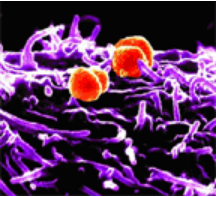Featured Products
Our Promise to You
Guaranteed product quality, expert customer support

Cell Immortalization kit
 Primary cells only undergo a pre-determined and finite number of cell divisions in culture. After limited population doublings (the number of which varies by species, cell type, and culture conditions), primary cells enter a state, so-called replicative senescence, where they can no longer divide.
Primary cells only undergo a pre-determined and finite number of cell divisions in culture. After limited population doublings (the number of which varies by species, cell type, and culture conditions), primary cells enter a state, so-called replicative senescence, where they can no longer divide.
Immortalizing the cell line will eliminate the frequent need to re-establish fresh cultures from specimens. Immortalized cell lines are capable of extended proliferation and should possess similar or identical genotype and phenotype to the parental tissue.
To surpass senescence, Creative Bioarray have developed several HT® Cell Immortalization Kit for immortalizing mammalian cells in culture. Also check out our existing collection of Immortalized Cells or our Cell Immortalization Service.
Virus Induction: EBV, HPV E6/7 and SV40 T Antigen
Viral genes, such as EBV, HPV-16 E6/7 gene, and the SV40 T antigens, are used to induce immortalization. For the most part, viral genes achieve immortalization by inactivating the tumor suppressor genes (p53, Rb, and others) that can induce a replicative senescent state in cells.
SV40 T antigens have been shown to be the simplest and most reliable agent for the transformation of many different cell types in culture and the mechanism of SV40 T antigens in cell immortalization is well studied. Recent studies have also shown that SV40 T antigen can induce Telomerase activity in the infected cells.
hTERT Expression
A more recently discovered approach to cell immortalization is through the expression of TERT, particularly for cells that are most affected by telomere length. This protein is inactive in most somatic cells, but when hTERT is exogenously expressed, the cells are able to maintain sufficient telomere lengths to avoid replicative senescence. Analysis of several telomerase-immortalized cell lines has verified that the cells maintain a stable genotype and retain critical phenotypic markers.
Inactivation of Tumor Suppression Genes
Recent research has found that co-expression of hTERT catalytic subunit with either p53 or RB siRNA can immortalize human primary ovarian epithelial cells, providing a more authentic normal cell model with well-defined genetic background (Yang G. et al. , Carcinogenesis 2007; Yang G. et al ., Oncogene 2007) . Likewise, overexpression of Ras or Myc T58A mutants have also been found to be able to immortalize some primary cell types (Sears R. et al., Genes & Dev. 2000).
Description: Adenovirus expressing SV40 large and small T antigens
Description: Lentivirus expressing SV40 whole gene
Description: Lentivirus expressing SV40 large T antigen
Description: Lentivirus expressing SV40 large T tsA58 antigen
Description: Lentivirus expressing SV40 large and small T antigens
Description: Retrovirus expressing SV40 large and small T antigens
Description: Adenovirus containing hTERT
Description: Adenovirus containing antisense hTERT
Description: Lentivirus containing hTERT with a GFP Reporter & resistance to Puromycin
Description: Lentivirus containing hTERT with a RFP Reporter & resistance to Puromycin
Description: Lentivirus containing hTERT
Description: Lentivirus containing hTERT with resistance to Hygromycin
Description: Lentivirus containing hTERT
Description: Lentivirus containing antisense hTERT
Description: High Titer Lentivirus containing hTERT with resistance to Neomycin
Description: Retrovirus containing hTERT
Description: Virus containing EBV gene
Description: Lentivirus containing HPV-16 E6/E7 gene

